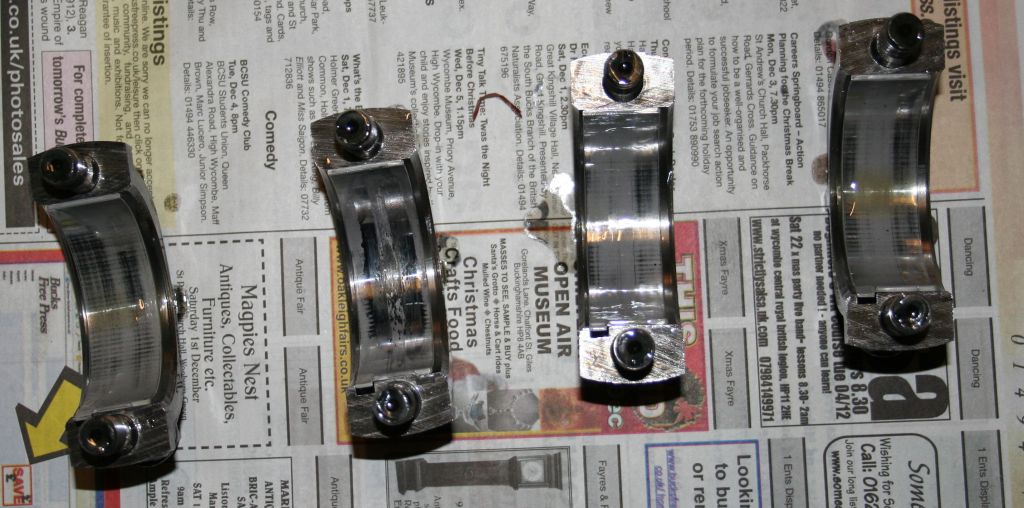Hello, firstly it's good to find a forum regarding engine oil/issues.
I have recently rebuilt an engine for use in my track car, all was going well until the oil cooler broke, it dropped the oil and ran dry - 6 litres of oil pumped straight onto the road in about 1.5 seconds... killed the ignition, hit the clutch, but all too late, it sounded rough.
I got the car recovered, I immediately stripped the sump to check, not much but there was some sludge in the bottom, thought I'd better check the shells, here they are:

The rebuilt engine has done about 80 miles of running in before the oil cooler incident. The crank was fine before the rebuild, so a polish and standard sized shells were used. The mains look a lot better, though still some wear so all will be replaced. Luckily the crank has escaped without damage.
What concerns me though is the wear pattern going horizontally in the picture. I *think* I know what has caused this, but would like to hear anyone else's thoughts first.
The engine is from a Lancia Integrale/Fiat Coupe 2.0 16v turbo, 4 cylinder.
I have recently rebuilt an engine for use in my track car, all was going well until the oil cooler broke, it dropped the oil and ran dry - 6 litres of oil pumped straight onto the road in about 1.5 seconds... killed the ignition, hit the clutch, but all too late, it sounded rough.
I got the car recovered, I immediately stripped the sump to check, not much but there was some sludge in the bottom, thought I'd better check the shells, here they are:

The rebuilt engine has done about 80 miles of running in before the oil cooler incident. The crank was fine before the rebuild, so a polish and standard sized shells were used. The mains look a lot better, though still some wear so all will be replaced. Luckily the crank has escaped without damage.
What concerns me though is the wear pattern going horizontally in the picture. I *think* I know what has caused this, but would like to hear anyone else's thoughts first.
The engine is from a Lancia Integrale/Fiat Coupe 2.0 16v turbo, 4 cylinder.

